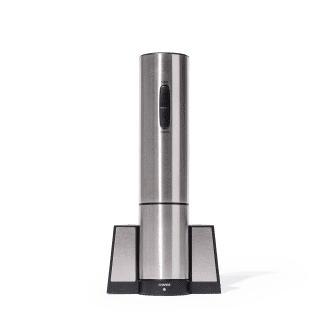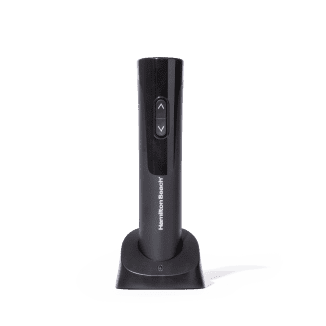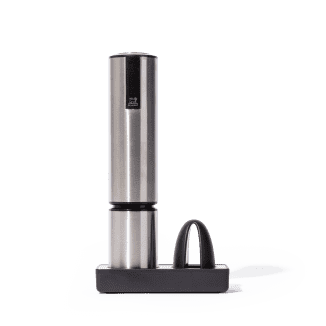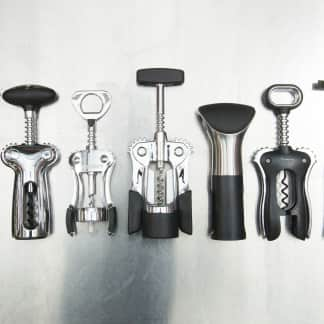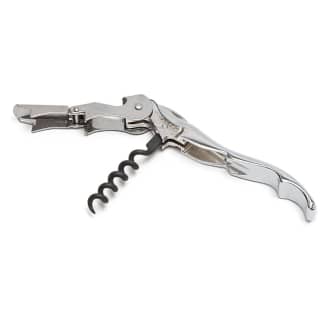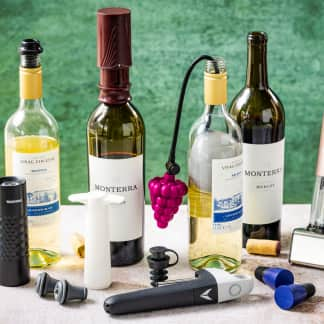Electric wine openers are designed to be easier and faster than waiter’s corkscrews and traditional twist wine openers. The best models are simple to operate, speedy, and easily remove synthetic and natural corks. Our top pick is the Secura Electric Wine Opener, which not only operates quickly and quietly but also has a lightweight and sleek design that’s comfortable to hold.

Opening bottles of wine with a waiter’s corkscrew or twist corkscrew can be irksome and intimidating. Electric wine openers promise to banish broken corks and take the guesswork out of opening wine.
There are two main types of electric wine opener on the market: manual start and automatic start. Manual models have buttons to operate the worm and release the cork. Automatic openers don’t have buttons and are activated once pressure is applied to the worm. These devices also automatically release the cork once it has been removed from the bottle. There are also a few hybrid models that have an automatic start and a manual cork release.

Are Electric Wine Openers Easier to Use?
We found that all electric wine openers turn and wobble a little while in use but some more than others. They mainly wobble when first entering the cork and twist midway through the process of opening a bottle of wine. If you’re interested in an electric wine opener because you have difficulty maneuvering traditional corkscrews, it’s important to note that these models still require some hand strength. We often had to use two hands on the wobbliest models to avoid them spinning out of control.
My Wine Cork Broke. Now What?
We asked an expert for a simple fix.How Electric Wine Openers Work
Regardless of style, electric wine openers essentially work the same way. Once the user places the opener over the neck of a wine bottle, they press a button or apply pressure, and the worm pierces the cork. After the worm has twisted through the entire length of the cork, it reverses direction and pulls the cork from the bottle. Once this cycle is complete, the device stops. Then the user presses another button (usually the top one) to activate the worm and release the cork from the opener, or the device will release it automatically.
The models we tested have rechargeable batteries. Some sit on charging docks, while others plug directly into an electrical outlet via a cord. We tested our lineup by opening wine bottles with both synthetic corks, which can be slippery and hard to penetrate, and natural corks. Read on to find out how we chose our favorite model.
What to Look For
- Manual Start and Cork Release: We liked the control that came with manual devices. Because we were in control of the “start” and “stop” buttons, we never worried about the devices starting before they were firmly planted on the bottles. We could also release the corks when we were ready.

- Sharp and Skinny Worms: Openers with worms that were skinny and sharp could easily pierce both natural and synthetic corks. The end of our winner’s worm was particularly pointy and knifelike; our least favorite was dull and bulky, making it ineffective.

- Smaller Models: Lighter devices (less than 1 pound) were easier to handle. We also liked models that were less than 12 inches tall when on their charging docks so that storing them on a shelf or in a cabinet was easier.
- Evenly Distributed Weight: Models that were proportionate throughout their design were much easier to hold and control. We could maintain our grip during the entire process of opening a bottle of wine.
- Quick and Quiet Operation: We favored models that opened bottles of wine without making too much ruckus. We also liked models that opened bottles in 20 seconds or less—roughly the same time it takes an experienced person to open a bottle of wine with a traditional corkscrew.
Nice to Have
- Transparent Windows: We liked being able to see the worm in action. It helped us know when the cork was pierced and fully removed from the bottle (and was fun to watch).
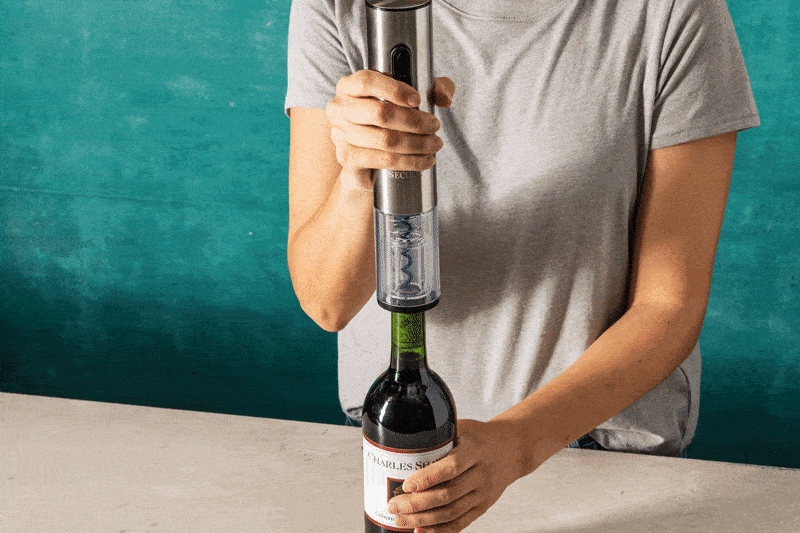
- An Effective Foil Cutter: Some models came with foil cutters but not all of them worked well. Our winner’s foil cutter easily sliced through the foil on the necks of wine bottles. There was also a designated knob on the charging stand to hold it when we weren’t using it.
What to Avoid
- Automatic Start: Some openers began operating as soon as pressure was applied to the worm, which meant they began whirling before being entirely placed over the bottle. The sudden movement and noise startled us, and we disliked the lack of control.

- Bigger Models: Models heavier than 1 pound were harder to keep steady. They also made our arms and hands tired when opening several bottles in a row. Models over 12 inches on their charging dock were too tall to store in a cabinet and on some shelves.
- Poorly Placed Grips: We also disliked models with poorly placed grips that forced our fingers into awkward positions, resulting in sore wrists.
- Slow and Noisy Operation: Devices that were loud and grating took away from the convenient experience of using an electric wine opener. Models that took longer than a traditional corkscrew lost several points.
The Tests:
- Open 20 bottles of wine (10 natural cork, 10 synthetic cork)
- Time how long it takes to open 1 bottle of wine with a synthetic cork and 1 bottle of wine with a natural cork
- Compare the time spent opening a bottle of wine with a waiter’s corkscrew and each electric wine opener
- Evaluate how quickly the devices fully charge
- Top 4 models only: Open an additional 12 bottles of wine
- Top 4 models only: Open 1 bottle of wine every day for 1 month
- Top 4 models only: Open 1 bottle of wine with a longer cork
How We Rated
- Performance: We examined how sharp the worms were and how well they could pierce both synthetic and natural corks.
- Ease of Use: We evaluated how easy the openers were to operate and how stable and secure they felt in our hands.
- Speed: We recorded how long it took each model to open bottles of wine and considered whether they were faster than other styles of wine opener.
- Durability: We assessed the continued performance of the wine openers over the course of a month.






